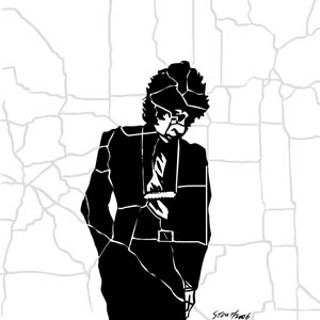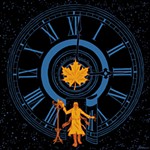Letters at 3AM
Out of Hibbing
By Michael Ventura, Fri., March 17, 2006

Driving into Minnesota through Fargo last spring, the land was flat and moist and green. The sky was wide as the Texas Panhandle's, but in the dry air of West Texas the sky seems to go on forever, while Minnesota's humidity somehow brings the sky down close. I was headed for a conference in Wisconsin, but I'd allowed myself a day's detour to mosey through a place I'd always wanted to see: Bob Dylan's hometown – Hibbing, Minnesota.
Dylan says he doesn't know how a guy like him came out of a place like Hibbing. In No Direction Home he says, "I was born very far from where I was supposed to be," and that in Hibbing he sometimes felt "that I was maybe not even born to the right parents." He's been saying things like that for 40 years, and I don't know a rock critic who doesn't take him at his word. But I also don't know a rock critic who's been to Hibbing. I wanted to see for myself.
Driving north on U.S. 75, a two-lane, the land was peaceful, but the towns were desperate – towns like Shelly, population about 200, with its pleading billboard: FREE LOTS FOR HOUSING CONSTRUCTION. In the midst of our greatest real-estate boom they're giving it away around here, or trying to. I turned east on U.S. 2 and crossed the Mississippi River – here it's no wider than a good-sized creek. The road was cracked and bumpy with filled-in potholes, very dangerous in winter, but clearly the county can't afford better. Then on U.S. 169 I passed villages that once meant to be towns and are now barely hanging on: Tacomite, Pop. 311; Marble, Pop. 675; Calumet, Pop. 383; Nashwauk, Pop. 935. Hibbing's a big city around here: As you enter, the sign announces a population of 18,046 (the number is 17,000-and-change on Hibbing's Web site, on which it's noted that the city is 97.33% white). All along that road, huge ugly mounds of earth rose on either side. They were man-made, but I had as yet no idea that I was driving through an enormous open-air mine.
On Hibbing's main drag, American flags hung from the lampposts. The picture show Robert Zimmerman attended as a boy is now a deli. The old railroad hotels are abandoned or worse – in the sinister, shabby Delvic Hotel, people still reside. The once-fancy Audroy Hotel announced in all-but-faded paint on its brick wall, "Hibbing's FINEST Supper Club" – now long defunct. Photos of Dylan were in the drugstore window. And then there's the high school, built in 1920, a classic: wide steps, pillars, fine red brick and – the high school is on Bob Dylan Drive! ("I got out of high school and left [Hibbing] the very next day," Dylan says in No Direction Home.) "Irony" is a word I steer clear of because it's so often misused, but that the high school Dylan hated, the high school where the principal drew down the curtain on his first band's first performance – that his high school is now on Bob Dylan Drive, that's irony. It's also clever: a surefire way to make most of those high school kids dismiss anything Dylan ever sang.
Then a sign interested me, quite apart from my interest in Dylan: It pointed the way to the Greyhound Bus Museum. I wondered, Why is that here? In the museum, a half-dozen very old people were very glad to see me. I was the only visitor. They asked me to sign their guest book and told me stories. In 1914 the Hibbing Transportation Company was formed to transport workers to the mines. The company purchased what passed for buses in that day, but those buses kept breaking down, so they perfected the long drive-shaft, weight distribution, etc., and invented the modern bus. The company expanded and changed its name to Greyhound.
The old folks shooed me into an enormous, hangarlike room and let me have the run of the place. There were many, many old Greyhounds from 1927 on; some, like the '56 Scenicruiser, I'd ridden as a boy. I went from bus to bus, sitting behind the wheel and in the seats, seeing my adolescent self with a bus ticket and the whole country down the road, in days when $250 bought a Greyhound pass with which you could travel as much and as far as you wanted for one month – $350 for two months. That came out of Hibbing.
I went from bus to bus remembering my youthful adventures and thinking maybe it wasn't so strange that Dylan (who probably left town on a Greyhound) came out of Hibbing. In its heyday, Greyhound was the cheapest ride from anywhere to anywhere – "anywhere" is a big concept, and it can't help but imply "anything." So Dylan wasn't the first "anywhere and anything" energy to come out of Hibbing.
Those old men at the museum had worked in the mine, and they asked, eagerly, with pride, "Have you seen it yet?" "Sir, I don't even know about it." "Kid," – it's fun to be called "kid" in your 60th year by someone who has the right – "Hibbing is still the largest open-pit iron mine in this world." The almanacs back him up. Little Hibbing is still ranked as "the iron-ore capital of the world." Iron, the metal of metals, the metal most essential to constructing the 20th century – Hibbing was its central source. Greyhound ("anyone can go anywhere") and iron: They represent two different but interlocking elemental energies, and they're the very reason for Hibbing's existence. When Dylan was a boy, Hibbing's Greyhounds roamed everywhere and Hibbing's ore was in damned near everything. A boy sees the obvious, and the man remembers what the boy saw: that Hibbing's culture was, to put it mildly, limited. But a young genius' psyche takes in far more than the obvious, and Hibbing's secret was that, almost anonymously, it's had more impact upon America than any town its size that I am aware of. In No Direction Home Dylan says Hibbing "looked like any other town out of the Forties and Fifties." That's how it looked, but that's not what it was. Hibbing emanated rare and potent forces. So has Dylan. I doubt that's a coincidence.
The old folks told me how to find the "Grand Canyon of Minnesota" – the viewing place from which one can see the great mine. "Grand Canyon" is an apt description. At the view point, you stand at the edge of an abyss: They've dug ore so deep out of this earth, you could stick an Empire State Building down there and not touch its tip from where you stand.
Beside the view point was a gift shop, and in the gift shop was a friendly old woman who had one bad eye. She asked me to sign the guest book, smiled, and said, "You're here about Bobby aren't you?" She just knew. We talked a while. I asked permission to quote her. The knowing lady was Nonnie McKanna and she'd been telling me of a golf date with "Abe" (that's Abraham Zimmerman), and how Mr. Zimmerman pulled out his wallet, showed Nonnie a check for $10,000, and said, "Bobby sent this for my birthday – and I thought the kid would starve to death!" Nonnie laughed, "We all thought he'd starve to death!" And she added, "He had wonderful parents. He comes from good stock. Very good stock." Nonnie McKanna hoped one day "Bobby" would return to Hibbing and give a concert. She said that wistfully.
I stood looking down into that gargantuan iron pit for a long time, astonished by the elemental energies that have emanated out of Hibbing. Dylan seemed to me an expression of those energies. By definition, you can't explain a mystery. How could young Dylan, who'd had a fairly uneventful youth, very quickly write songs of which it could be said (as he said of Woody Guthrie's), "You could listen to his songs and actually learn how to live."
One becomes a great artist not through the expression of oneself but through the expression of forces greater than oneself. The deep cold of Hibbing's winters, the deep pit before me, and whatever made Hibbing generate the most accessible transportation from the mid-Twenties to the mid-Seventies – it may well be that Dylan's sensitivity to what's elemental here gave him the foundation needed to be the greatest artist of my generation. For what has distinguished him more than his capacity to express the elemental, the mysterious core, of what he sang about and of the very medium of song?
Standing at the edge of the iron pit's abyss, I thought of what an old miner said at the museum. It went something like, "One of the prettiest things I ever saw was at the mine on the night shift when the sun was coming up – there was a mist, you see, and the sun was shining through the mist on that red ore; mist and earth glowed red like the glow was coming out of the ground – I can't tell you, I can't tell you how pretty that was." Sounded something like a Dylan lyric. ![]()








